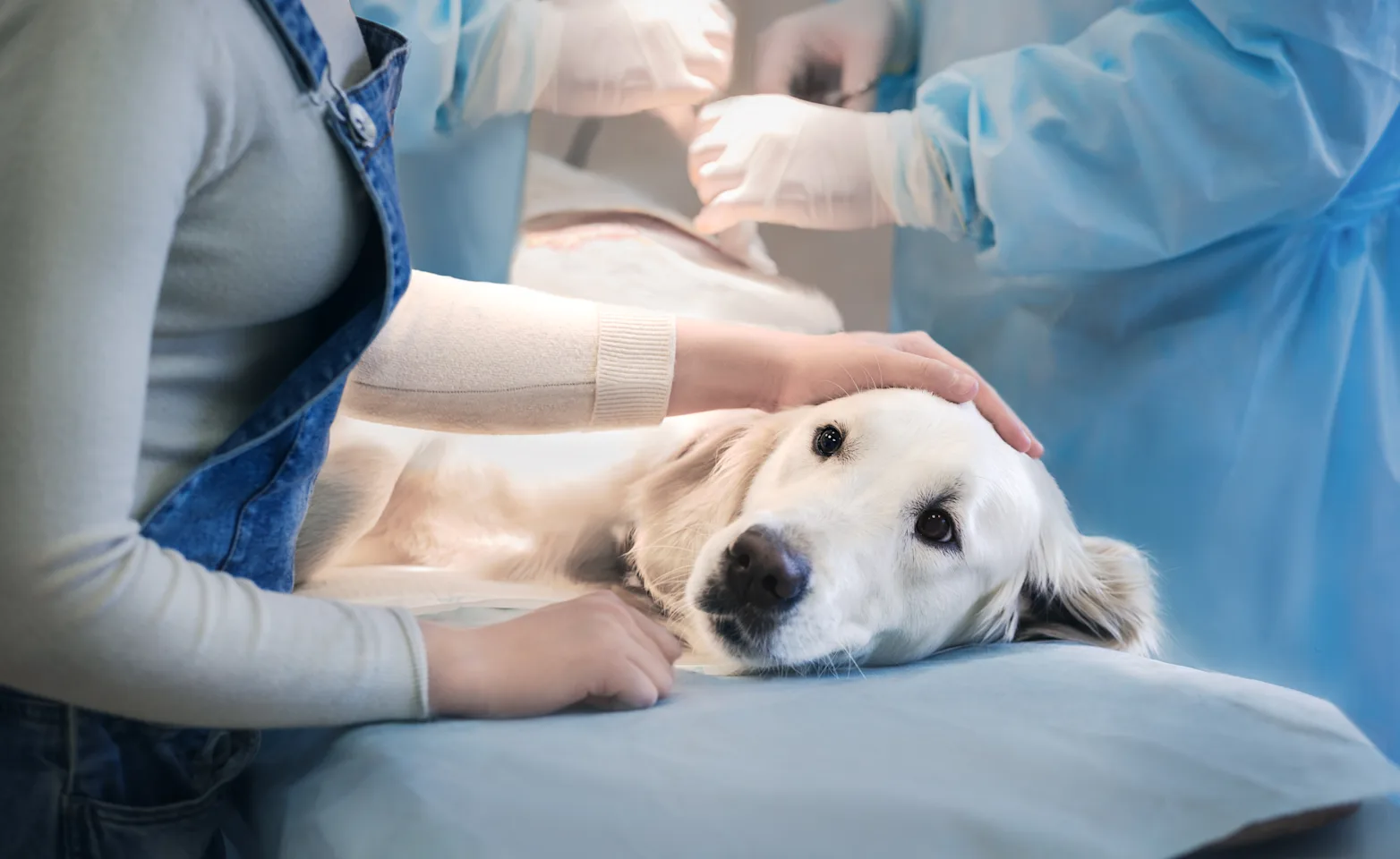Nashville Veterinary Specialists
Distal Femoral Varus in Large Breed Dogs With Medial Patella Luxations
Information provided by Wesley Roach, DVM, Diplomate American College of Veterinary Surgeons
Medial patella luxations (MPL) in large breed dogs can be frustrating to correct surgically due to angular limb deformities of the femur. Distal femoral varus has been shown to play a significant role in medial patellar luxation in breeds such as the Labrador retriever.
Affected dogs typically have a bow-legged stance, and can have reluxation of the patella after standard surgical techniques (trochleoplasty, tibial tuberosity transposition, lateral imbrication, medial release) are performed – which can be a source of frustration for the owner, surgeon, and patient. Therefore determining the presence and severity of femoral varus pre-operatively is important.

Well-positioned craniocaudal and lateral radiographs of the femur are critical. Breed-specific normal values have been published, or the contralateral femur can be used for comparison (if not concurrently affected). In addition, an axial radiographic view of the femur allows quantification of femoral torsion, which can be corrected concurrently. Some deformities are complex and require advanced imaging (such as a CT scan) with 3D reconstruction to fully evaluate and determine a treatment plan. It is also possible to have concurrent angular limb deformities of the tibia or cranial cruciate ligament injuries that need to be considered in the treatment plan.
The most common treatment for significant femoral varus is a laterally based closing wedge osteotomy (Distal Femoral Osteotomy or DFO). The osteotomy is stabilized with a dynamic compression plate and screws, and the patient is exercise restricted for 8-10 weeks while the bone is healing. Overall, femoral corrective osteotomies combined with the standard medial patella luxation techniques are associated with a low rate of recurrent patellar luxation.
